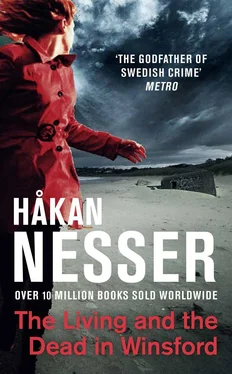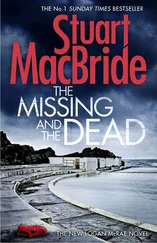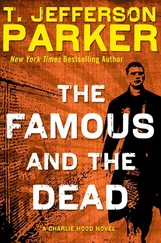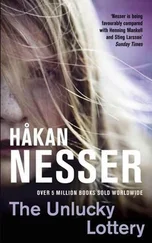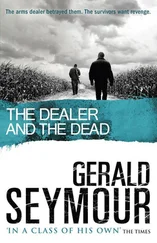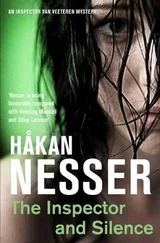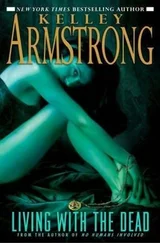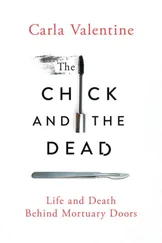Håkan Nesser - The Living and the Dead in Winsford
Здесь есть возможность читать онлайн «Håkan Nesser - The Living and the Dead in Winsford» весь текст электронной книги совершенно бесплатно (целиком полную версию без сокращений). В некоторых случаях можно слушать аудио, скачать через торрент в формате fb2 и присутствует краткое содержание. Год выпуска: 2013, Издательство: Mantle, Жанр: Криминальный детектив, на английском языке. Описание произведения, (предисловие) а так же отзывы посетителей доступны на портале библиотеки ЛибКат.
- Название:The Living and the Dead in Winsford
- Автор:
- Издательство:Mantle
- Жанр:
- Год:2013
- ISBN:нет данных
- Рейтинг книги:4 / 5. Голосов: 1
-
Избранное:Добавить в избранное
- Отзывы:
-
Ваша оценка:
- 80
- 1
- 2
- 3
- 4
- 5
The Living and the Dead in Winsford: краткое содержание, описание и аннотация
Предлагаем к чтению аннотацию, описание, краткое содержание или предисловие (зависит от того, что написал сам автор книги «The Living and the Dead in Winsford»). Если вы не нашли необходимую информацию о книге — напишите в комментариях, мы постараемся отыскать её.
The Living and the Dead in Winsford — читать онлайн бесплатно полную книгу (весь текст) целиком
Ниже представлен текст книги, разбитый по страницам. Система сохранения места последней прочитанной страницы, позволяет с удобством читать онлайн бесплатно книгу «The Living and the Dead in Winsford», без необходимости каждый раз заново искать на чём Вы остановились. Поставьте закладку, и сможете в любой момент перейти на страницу, на которой закончили чтение.
Интервал:
Закладка:
The seventeenth of November. Eight degrees. Rain and wind in the morning.
Several days have passed now. And more especially nights, as it’s getting darker. Light can’t manage more than eight hours per day in these parts at this time of year, while darkness holds sway for sixteen.
It’s the anniversary of Gun’s death. I sat for a while with a burning candle this morning, thinking about her. It all seemed very distant, almost an old illusion. I don’t know if I really remember her now, or if it’s no more than images of my remembering her in the past. Copies of copies.
Anyway, I have begun to settle down into a sort of rhythm. The good thing about habits is that as you follow them, you don’t have to make decisions. We go for a walk every morning, Castor and I, either southwards towards Dulverton or northwards, up towards the Punchbowl and the abandoned stone quarry. If it’s not too windy we sometimes go on up to Wambarrows, the highest point of this part of the moor — 426 metres above sea level, according to the map — where those scanty, overgrown Roman remains are to be found.
But we don’t normally go such a long way before breakfast; instead we save the longer walks until the early afternoons. Often two hours or more. The other day, for instance, we went as far as the remarkable church in Culbone: St Beuno’s, named after a Welsh saint from the seventh century. It is said to be the smallest parish church in the whole of England, and it is hidden away among dense greenery close to a waterfall in a place where you wouldn’t expect to find any buildings at all. It took us an hour to get there: we started from Porlock Weir on the coast, and followed the path tended by the National Trust, which runs alongside more or less the whole of the coast of Somerset, Devon and Cornwall. Incidentally, it was somewhere in Culbone parish that Samuel Coleridge wrote his poem Kubla Kahn — after an evening spent high on opium, according to legend — and if Martin had been with us we would no doubt have spent several hours looking for the farm where the great poet spent that remarkable night.
A bit further inland is Doone Valley, where we have also explored quite a lot and visited pubs in all three of the old villages Oare, Brendon and Malmesmead. A woman and her dog: we are welcome wherever we go. I have also succumbed to temptation and bought R. D. Blackmore’s Lorna Doone — a Romance of Exmoor and started reading it instead of Dickens, despite the fact that I’m only halfway through Bleak House. Lorna Doone is a must, I was told by the hundred-year-old lady in the antiquarian bookshop in Dulverton: you can’t possibly live on Exmoor for more than a week without starting to read John Ridd’s ‘A simple tale told simply’.
So when we get back home after the day’s excursion, irrespective of which muddy paths we have been plodding along, we spend a few hours in the late seventeenth century: it feels remarkably close, in contrast to my dear departed sister. I have no difficulty in imagining the lives and motives of John Ridd and Lorna Doone, no difficulty at all. But as I don’t have a television set and have very little idea of what is happening in the world out there, time takes on a different character. Dawn-daylight-dusk-night; minutes and hours become more important than days and years. There is an old radio in the cottage, but I’ve only tried once to switch it on — and found myself tuned into a station reproducing something strikingly scratchy by Elgar, that was all.
Cooking has been somewhat neglected, I must admit. This last week I have had dinner at The Royal Oak in the village three evenings out of seven. I’m already regarded as a regular there: Rosie or Tom always go out of their way to bid me welcome, Castor always gets a saucer of treats, and the few customers who are already there when we arrive — usually Henry, always Robert, and two evenings out of four an elderly gentleman whose name I don’t know who is disabled and has his Permobil parked outside the entrance — all smile at me and wish me good evening and comment that the weather has got worse.
I’ve got into the habit of taking with me Martin’s notes from Samos when I go to The Royal Oak. Doing so no doubt confirms my status as a woman writer. I sit at my usual table, eat away and concentrate hard on my reading while Castor snoozes at my feet. It’s not a difficult role to play, either for me or for him, and the others leave us in peace. I feel that I am respected and I always drink two glasses of red wine, not enough to prevent me from driving back up Halse Lane through the autumnal darkness. I think I have managed to create around me an appropriately protective layer of egocentricity. We get home between a quarter to ten and ten, and I always switch off the bedside lamp before eleven.
I read a bit of the Samos material in the mornings as well, and as I write this I’m within a few days of finishing the second book, describing the summer of 1978. I don’t like it.
It’s about the month after I met Martin in Stockholm’s Gamla Stan, and it’s possible that the increasing unease I feel as I read it has to do with this fact. It is before our life together began, but I recall thinking back to the garden party and that man Martin Holinek during the summer that followed. I’m sure I never imagined things would progress so far that we would get married and have children, but I had the feeling that there would be some kind of continued contact. However, I am never mentioned in Samos, June-July 1978 : but there are references to lots of other women.
For the first time he admits in writing that he has had sex with somebody. With two women, in fact, about a week apart. One is called Heather and is a ‘red-haired Celtic nymph’; the other is American and is simply referred to as ‘Bell’. The intercourse is described in roughly the same tone as a Vespa ride to Ormos to buy groceries, or a discussion of receptivity aesthetics with a Danish philosopher by the name of Bjerre-Hansen.
But what makes me feel uneasy is neither the intercourse nor the receptivity aesthetics. It is something else, something that isn’t actually mentioned.
Or perhaps it is just imagination, I can’t be sure yet. I have two diaries left to read, plus the typewritten material and what is on the computer; but I have no idea what Martin had in mind when he told Bergman that he was sitting on material such that anybody would go down on their knees in order to get permission to publish it.
Well, perhaps I do have a suspicion: but I don’t dare to spell it out yet.
Anyway, his Norwegian friend Finn Halvorsen — the one who originally told Martin about the collective on Samos — has turned up this second summer, and they spend quite a lot of time together. In the middle of July Tadeusz Soblewski from Gdansk also puts in an appearance: he is a poet, a doctor of philosophy and the editor of a literary magazine, and he soon becomes a highly rated participant in conversations. These three — Martin, Finn and Soblewski — are also invited to private get-togethers at Tom Herold’s and Bessie Hyatt’s house, on more than one occasion, and I have the impression that they are forming a sort of inner circle. That would include those mentioned — including Hyatt and Herold of course — plus the two German women writers, Doris Guttmann and Gisela Fromm.
Holinek, Soblewski and Halvorsen. Guttmann and Fromm, Herold and Hyatt, yes, those are the ones. Plus Gusov: the annoying Russian muscles in on the get-togethers, and they evidently find it difficult to get rid of him. Martin writes that he can’t understand why Herold persists in tolerating him.
But he doesn’t have sex with Doris or Gisela — or at least, he writes nothing about any such activity. They like to sunbathe in the nude — but then all German do, is all he says.
Читать дальшеИнтервал:
Закладка:
Похожие книги на «The Living and the Dead in Winsford»
Представляем Вашему вниманию похожие книги на «The Living and the Dead in Winsford» списком для выбора. Мы отобрали схожую по названию и смыслу литературу в надежде предоставить читателям больше вариантов отыскать новые, интересные, ещё непрочитанные произведения.
Обсуждение, отзывы о книге «The Living and the Dead in Winsford» и просто собственные мнения читателей. Оставьте ваши комментарии, напишите, что Вы думаете о произведении, его смысле или главных героях. Укажите что конкретно понравилось, а что нет, и почему Вы так считаете.
